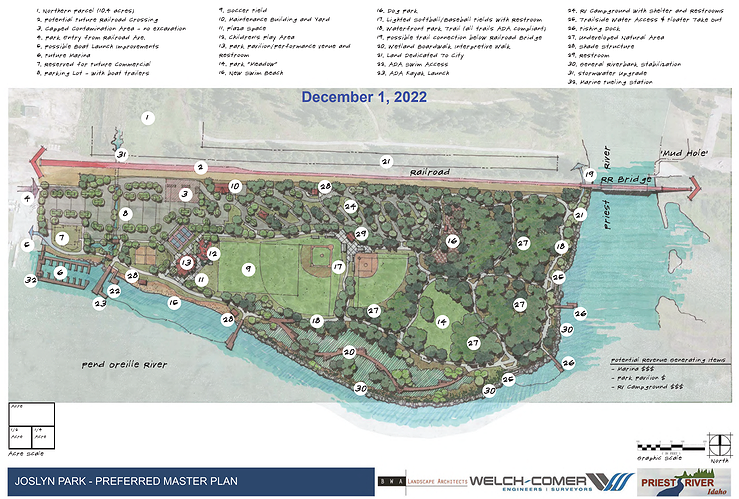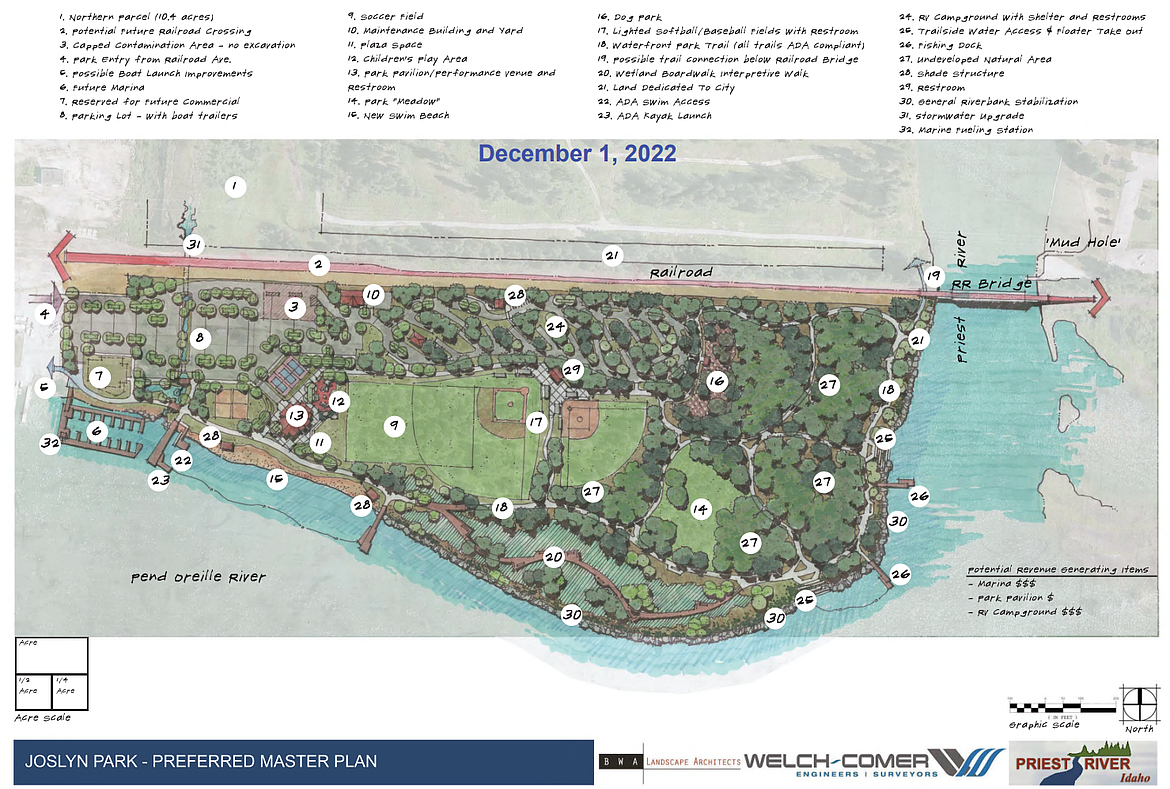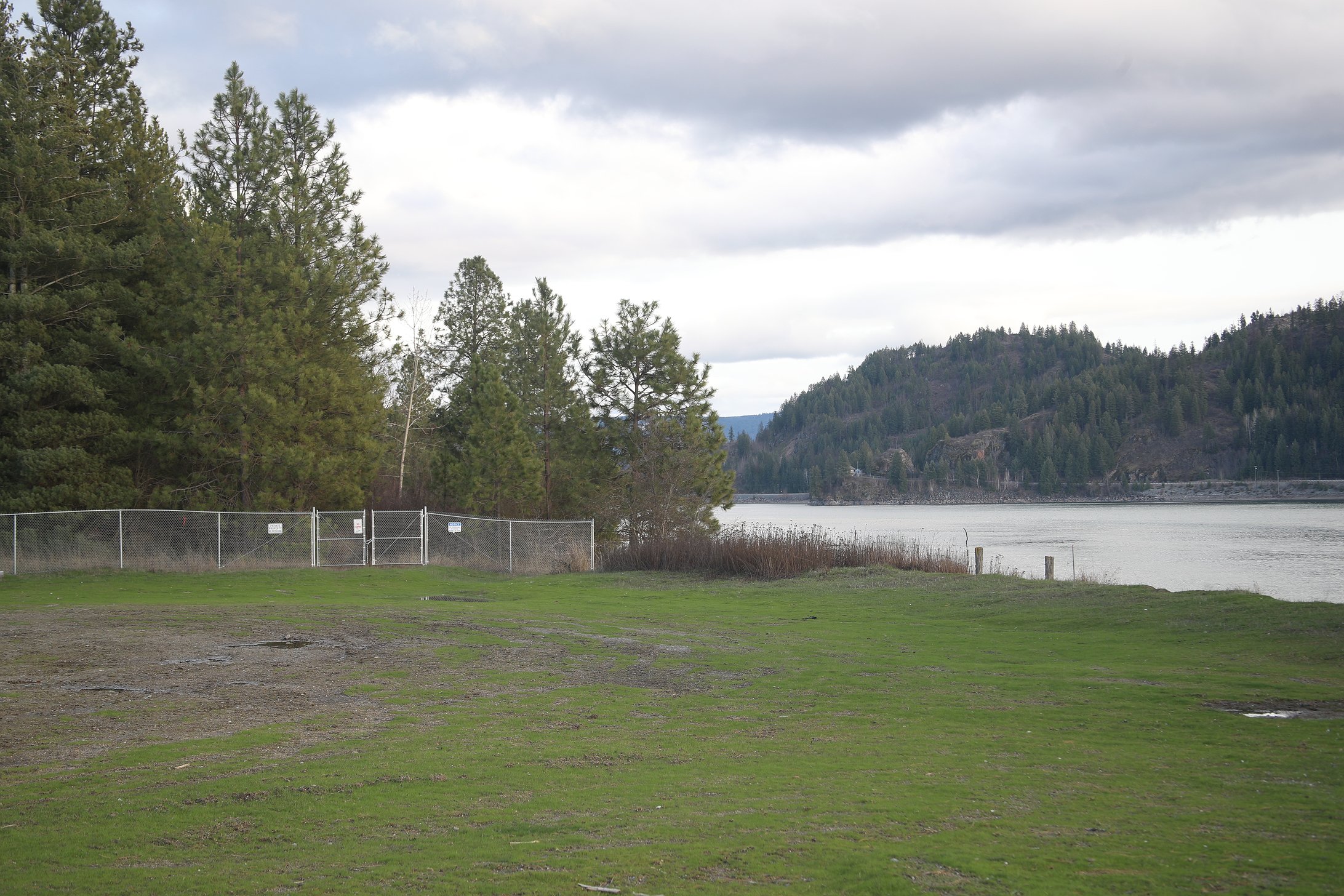Forest, shoreline work approaches at Two Rivers Park
PRIEST RIVER — After years of remediation and preparation, a coalition of government and resident organizers are readying the property that will soon become Two Rivers Park for public access as soon as this summer.
A former industrial site, the 38.4-acre wooded parcel southeast of downtown Priest River was rehabilitated by the landowner in 2018 and gifted to the city in 2021.
Project organizers have spent the past three years laying the foundation for a park that could one day include a swimming beach, a dog park, athletic fields and other amenities. Once foresters remove hazard trees and cut footpaths on the property this spring, community members will be able to safely access the area for the first time in a century.
“That was one of the biggest goals,” said Jim Martin, Priest River Urban Renewal Agency consultant. “We didn't want to get this property and then sit on it and not have people be able to access it.”
Background
In the early 20th century, Joslyn Manufacturing produced creosote-soaked wooden poles at the confluence of the Priest and Pend Oreille rivers. After production ceased in 1958, the site went unused for decades due to concerns about the presence of toxic creosote.
Joslyn voluntarily enrolled in an Idaho Department of Environmental Quality cleanup program in 2018 and transferred ownership to the city in 2021 under the condition that the property would become a public space.
City staff consulted residents, business owners and agency representatives and completed a master plan in 2023 outlining the community’s objective for the property — to serve residents as a revenue-neutral, multi-use park with year-round recreational opportunities.
Active projects
To lay the groundwork for Two Rivers Park’s recreational features, project organizers are working to improve the forest on the property.
“We want this park to look like a park later, with tall, happy, healthy trees that you're hiking underneath. But when you're out on the site … it doesn't look like that at this moment in time,” Elynn Reierson, consulting forester with Inland Forest Management, said.
This spring, contractors will remove dead and unhealthy trees to mitigate the risk of pervasive insect disease in the area. The efforts will simultaneously reduce safety hazards for park users and make the forest easier to manage in the event of a wildfire.
“Fire hazard is a concern on the site, not only because we live in North Idaho and fire is a part of our forest ecosystem, but it's also a concern because of public use,” Reierson said. “Whenever you have people, you have potential for starts.”
A consultant recently flagged the parcel to mark hazard trees for removal; Martin said the project could be complete and the park publicly accessible by June 1.
Additionally, organizers expect grant money and revenue from timber sales to largely offset the cost of the forestry improvements at the site.
“The forest management project, other than a few thousand dollars for consulting fees, should be covered,” said Martin.
Meanwhile, project leaders are also preparing a design for shoreline improvements that will stabilize the property’s eroding riverbanks; the design is about halfway complete and expected to be 90% done by fall.
Organizers plan to install loose rock material known as riprap along a majority of the shore and integrate vegetation wherever they can to strengthen the riverbank and improve wildlife and fishing opportunities.
“There's a lot of hard armoring, a lot of rock, but we’re trying to soften it as much as possible,” said Derek Young, Idaho DEQ voluntary cleanup program manager.
The timeline for shoreline fortification remains to be seen, but the work will occur before supplementary features are constructed at the park.
Funding the park
In total, bringing Two Rivers Park to life with all the amenities envisioned by organizers will cost an estimated $21 million.
With limited city funds available for the park, project leaders are likely to pursue grants and gifts; the property’s several plant and wildlife conservation opportunities and half-mile proximity to downtown make it a strong candidate for federal, state and private money.
As organizers make decisions regarding amenities going forward, self-sufficiency and sustainability will continue to be guiding values.
Project leaders plan to construct a marina and RV park that will generate revenue and support maintenance costs as long as the property is used by the community.
“Whatever we do, this project has to fund itself. We cannot build this thing and not have funding to continue to maintain it,” Martin said.
For every item, “we look at it and we go, ‘OK, what's the cost to do it, and what's the cost to maintain this?’” he added. “We just have to evaluate that as we go.”
 The latest concept for the 38.4-acre property includes a swimming beach, dog park, marina, RV campground, fishing dock, wetland boardwalk and other amenities.
The latest concept for the 38.4-acre property includes a swimming beach, dog park, marina, RV campground, fishing dock, wetland boardwalk and other amenities.




